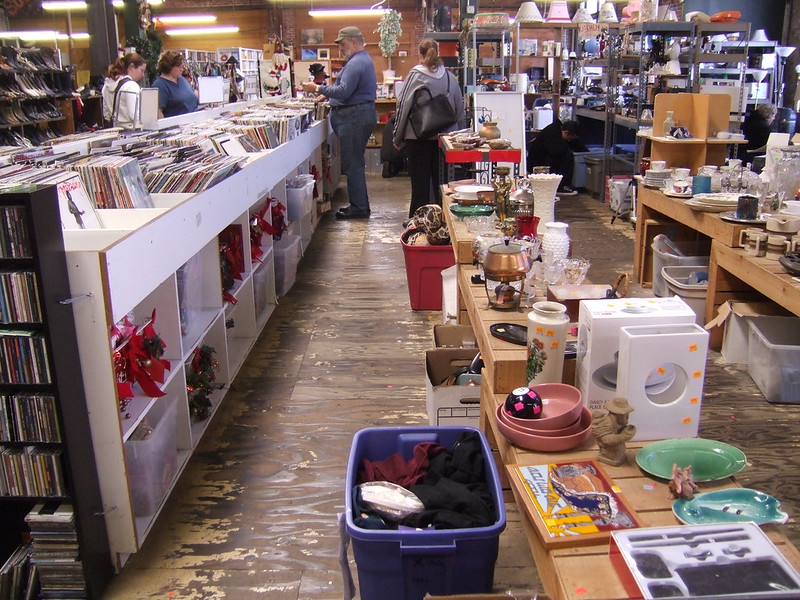Thrift Stores: Smart Shopping, Sustainability, and Community
Thrift stores offer more than bargain hunting; they are hubs of circular economy activity, community engagement, and creative discovery. From clothing and furniture to books and housewares, thrift stores let shoppers find unique items while extending the life of goods. For many people, thrift shopping combines practical savings with environmental and social benefits. Whether you’re a beginner or a seasoned thrifter, understanding how these stores operate, what to look for, and how they fit into broader sustainability and community goals makes your visits more rewarding and efficient.

Why choose thrift stores for everyday shopping?
Thrift stores provide access to a wide variety of goods at lower prices compared with many new retail options. Shoppers can often find high-quality or vintage items that are no longer in production, making thrift stores a destination for distinctive style. Beyond price, buying used reduces demand for new manufacturing and conserves resources. For households seeking to stretch a budget, thrift purchasing can be an essential strategy. Many stores also restock frequently, so regular shoppers have a chance to find fresh merchandise on repeat visits.
How to find quality items in your area
Start by scouting local nonprofit and for-profit thrift stores, consignment shops, and donation centers to discover what each specializes in. Inspect items for wear, stains, and functionality; check seams, zippers, and electronics for working condition. Look for trusted brand names and sturdy materials like wool, leather, and solid wood that tend to last longer. If possible, develop relationships with staff—they can tip you off to new donations. Online platforms and social feeds often list notable finds or special sale days, making it easier to visit strategically rather than randomly.
What to know about donating and selling
Donating items requires vetting what the store accepts—most thrift stores prefer clean, functional clothing, working electronics, and furniture free of major damage. Nonprofit thrift stores often provide donation receipts for tax purposes but check local rules on valuation. If you’re selling through consignment or a resale shop, expect stores to take a commission and to hold items for a set period. Clear labeling and honest descriptions help ensure items move quickly. Some organizations also offer pickup services for large donations, which can be a convenience for donors while ensuring usable goods reach the store.
How thrift shopping supports sustainability
Thrift stores extend product lifespans and divert goods from landfills, making them practical actors in waste reduction. Reusing items reduces the energy and raw materials required for producing new goods. Additionally, many thrift operations support repair and upcycling initiatives, encouraging customers to mend or refinish items rather than discard them. When combined with mindful consumption—buying only what you need—thrift shopping can be a consistent way for individuals to lower their environmental footprint while still accessing a rich variety of consumer goods.
Tips for reselling, upcycling, and flipping finds
Successful resellers and upcyclers look for items with inherent value or easy improvement potential. Cleanable surfaces, classic silhouettes, and solid construction are ideal candidates. Small repairs, new hardware, or fresh upholstery can significantly increase an item’s appeal. Photograph items well and write accurate descriptions if you sell online—transparency about flaws builds buyer trust. For crafters and makers, thrifted textiles, frames, and hardware supply affordable materials for projects. Pricing should reflect labor, materials, and market demand; test different listing strategies to find what sells in your chosen marketplace.
How thrift stores benefit local communities
Many thrift stores are tied to charitable missions, funneling proceeds into social programs, job training, or community services. Even for-profit resale shops create local jobs and keep economic activity within the neighborhood. Stores often act as community hubs where volunteers, donors, and shoppers interact, strengthening local networks. Some locations offer educational workshops on mending, sustainable living, or budgeting, furthering community resilience. For areas with limited retail options, thrift stores can provide affordable access to essentials, helping households navigate financial strain while preserving dignity.
Thrift stores combine practicality with purpose: they save money, reduce environmental impact, and often support local causes. Approaching thrift shopping with a mindful eye—knowing what to look for, where to donate, and how to give items new life—enhances both the personal and community value of secondhand goods. By treating thrift stores as part retail, part resource center, shoppers can enjoy distinct finds while contributing to broader goals of reuse and neighborhood strength.






